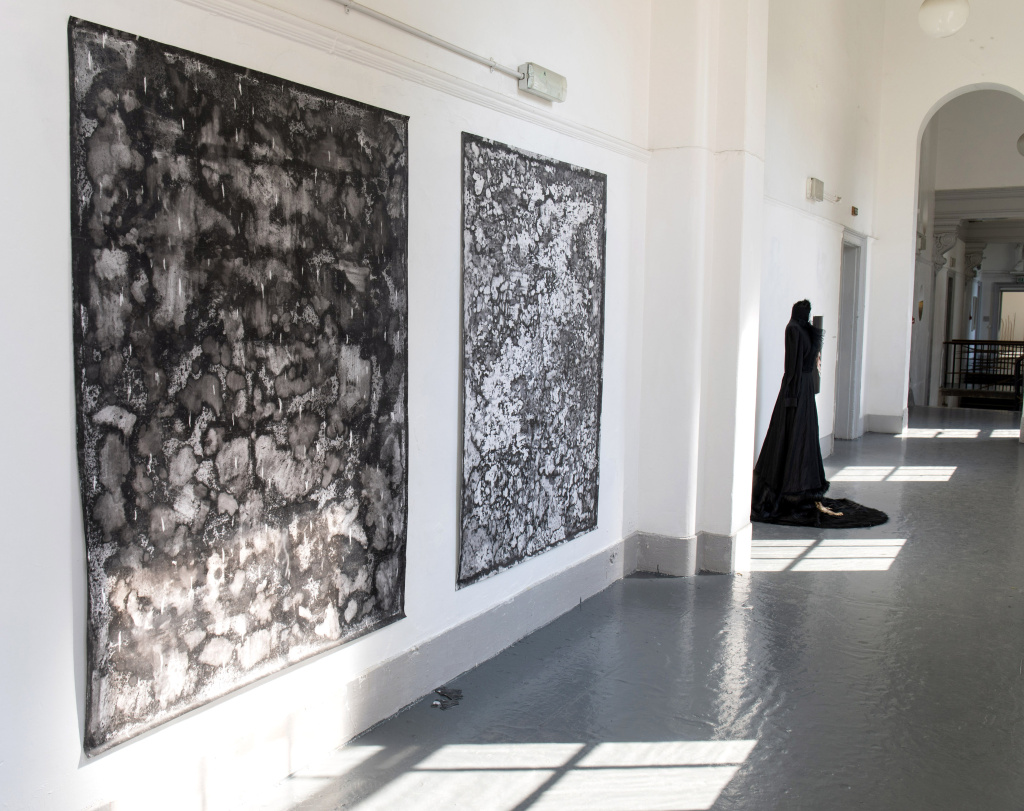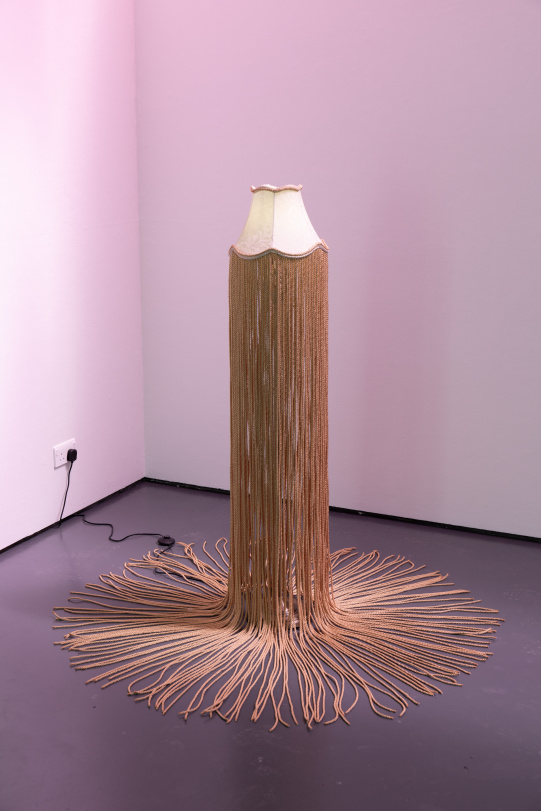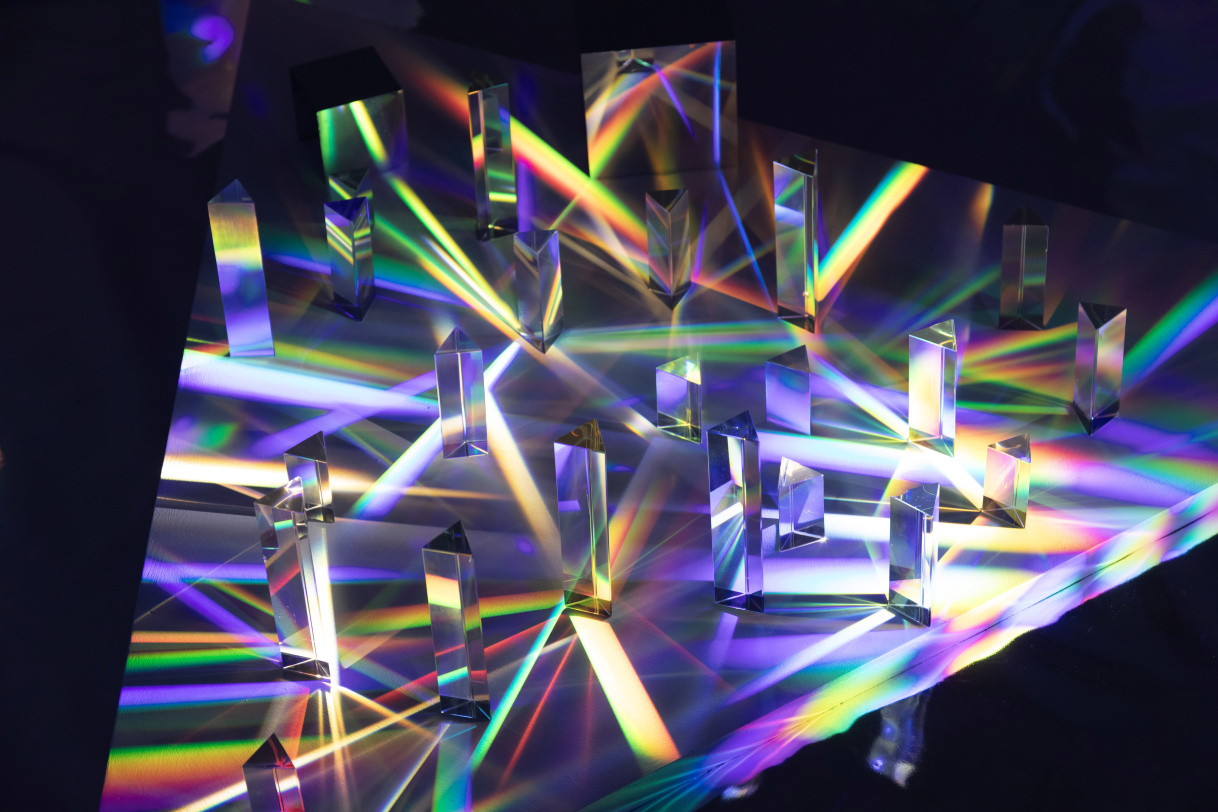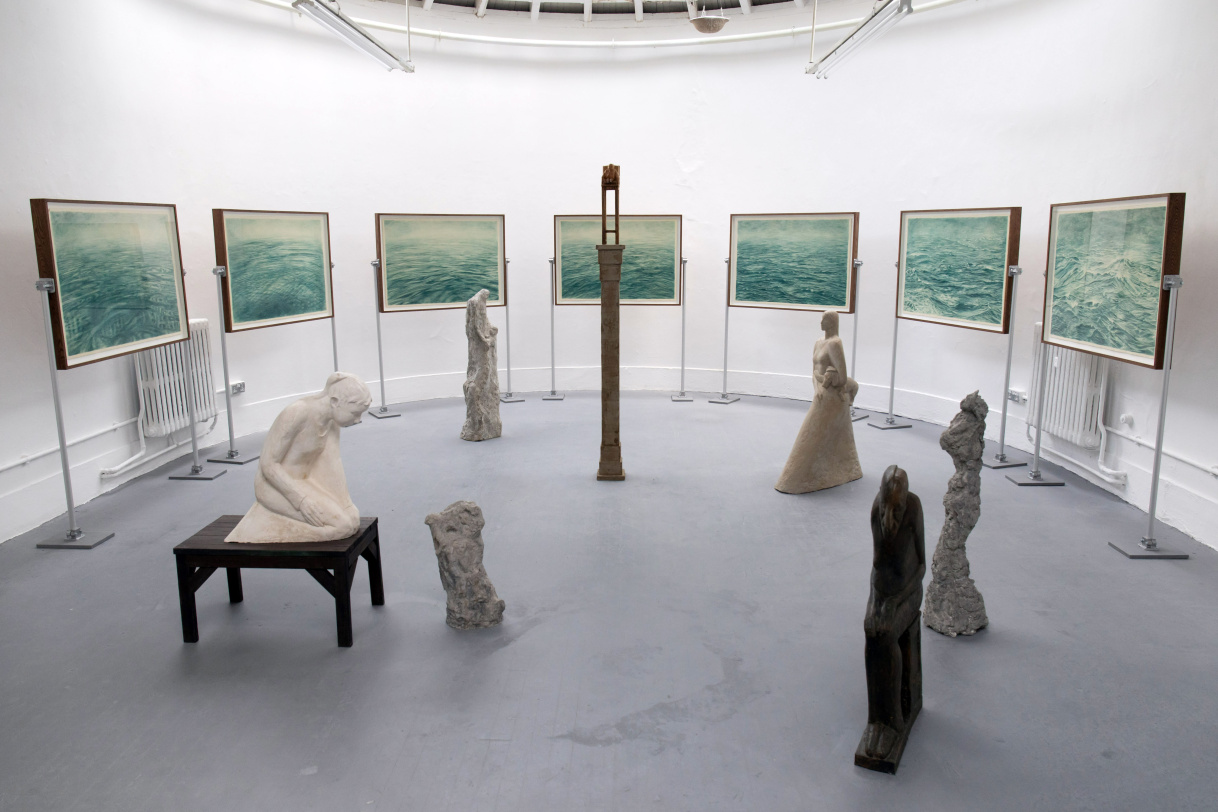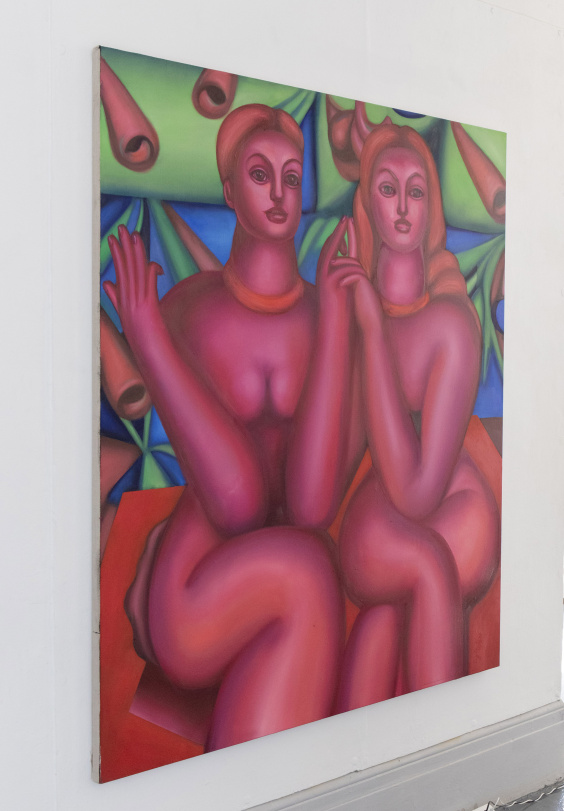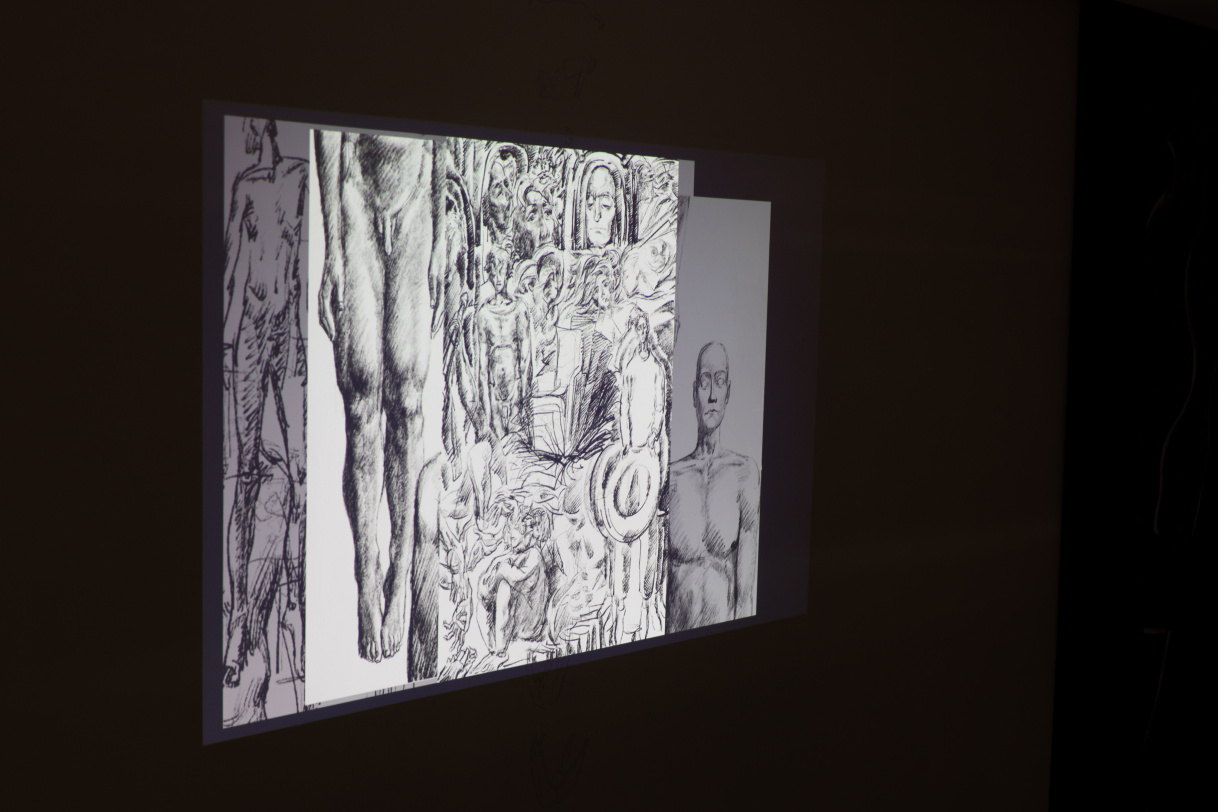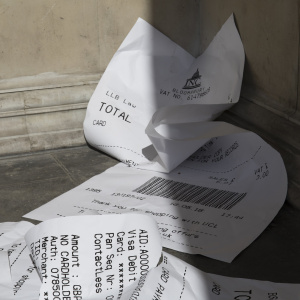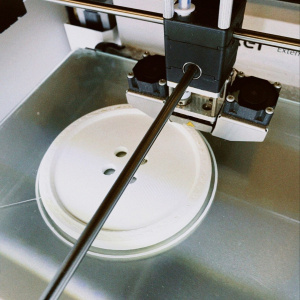MFA Fine Art
Our MFA is an 18-month practice-based programme (two academic years) with a two part, written and oral, Critical Studies component. All students select their area of practice in the Sculpture, Painting or Fine Art Media. There is lively crossover between all areas.
Key information
-
MFA
-
18 months
-
Full-time
-
Start: September 2024
-
Applications open Mon 14 Oct 2024 to Mon 6 Jan 2025
Entry and fees - mfa
UCL Prospectus: Please read this section in conjunction with the UCL Graduate Prospectus
Entry requirements: see the UCL Graduate Prospectus
Fees and funding: see the Funding for students on graduate courses.
Webinar for applicants: portfolio submission process
In this webinar for postgraduate applicants, a member from the Teaching and Learning team at Slade School of Fine Art will be going through the portfolio submission process. At the end of the presentation, there will be an opportunity to ask questions about the process of submitting the portfolio.
Friday 20 December, 10am
Join via Zoom.
MA/MFA Open Day video
This video was originally recorded in 2021. Information is correct as of time of recording.
©Slade School of Fine Art
Aims
The aims of the MA and MFA are to:
- provide an intellectual and creative environment for fine art graduates to further develop their individual potential as professional artists;
- enable students to continue independent research in Painting, Sculpture or Fine Art Media;
- enable students to continue to develop a high degree of critical awareness of the broadening intellectual and cultural contexts of fine art and the artist’s role in shaping contemporary culture;
- provide responsive, critical and challenging teaching and tutoring; creating a forum for open and formative discussion, and promoting peer-group learning;
- provide practical and technical resources and guidance across a range of creative media;
- understand and articulate, through writing and speaking, the things that inform their practice and the context in which they are making art in the MFA;
- develop independent academic research and ideas, articulated through writing, based on a sound understanding of a range of historical, theoretical and philosophical approaches to art in the MA.
MFA Programme
The Practice-based Programme
Students on the MFA and MA follow the same practice-based course and are based in one studio area: Painting, Sculpture or Fine Art Media (which can include electronic media, photography, print, performance, sound, film and video). Each area has a dedicated staff group and focused discourse. Both the MFA and the MA programmes are research-centred.
The course is practice-based. Teaching takes place through individual tutorials, crits, where students present their work in their subject areas, as well as organised events, such as talks and workshops.
A programme of area-specific visiting artists is arranged throughout the year.
Technical facilities are open to all students. Technical inductions are given to new students at the start of the Academic Year.
The first year supports an experimental and investigative approach to art making, which is consolidated in the second year leading up to the degree exam. Throughout the course practical and theoretical skills are addressed, enabling students to work towards realising their creative potential, and developing confidence to organise and implement an independent programme at this level and sustained approach to their own practice.
One of the Slade's great strengths is the wide range of expertise that it offers to all students. It is an art school run and taught by practising artists. There is a strong commitment to the teaching of both traditional techniques and emerging technologies, encompassing analogue and digital formats. Our facilities support film and video, analogue and digital photography, screen printing, etching, stone lithography and bookbinding, alongside continually updated digital resources supported by online tutorial learning. Our workshops are supporting woodwork, metal work, foundry work and casting, as well as access to laser cutting, CADCAM, 3D Printing and ceramics. The painting area leads a methods teaching and research platform for preparation and investigation of pigments and paint materials.
Preliminary inductions to all the workshops within the Slade take place at the beginning of the year and are mandatory in order to use the facilities. Further specialist sessions are available to teach new skills or build on existing skills across all subject areas.
Painting
Nadia Hebson, Head of Graduate Painting
Graduate Painting at the Slade is a deeply supportive and critical studio environment where students can take risks, ask questions and reflect in company. As part of an international studio community, students are encouraged to evolve their practice in relation to their concerns through attentive discussion, experimentation and exchange. Central to the programme is the ongoing development of a studio ethos and the opportunity to reconfigure, unravel and rebuild the concerns and research that underpin a practice in relation to material experimentation. Students and staff work together to develop a generative atmosphere which accommodates a plurality of voices, critical opinions and material expressions which both critique and are in dialogue with the expanded histories of painting and their contemporary manifestations.
Sculpture
Karin Ruggaber, Head of Graduate Sculpture
The Graduate Sculpture area invites students working across a range of media to work within an environment of making, experimentation and ideas. Graduate Sculpture is practice-based and offers a dedicated and specialist, as well as experimental, approach to what sculpture means in a broader context of contemporary culture today.
The ethos of the course is to embrace a broad range of sculptural practices and a variety of different approaches and forms, from working with objects and materials such as plaster, clay, stone and metals, to transitory spatial interventions with light, sound or text. The area is a shared, flexible resource and the forum for critical attention, debate and imaginative experimentation, encouraging a strong sense of community and spirit of collaboration. Students are expected to work independently within the framework of the Graduate Programme, and the wider criticality and awareness of contemporary and historical discourse.
Fine Art Media
Graham Gussin, Head of Graduate Fine Art Media
Students in the Fine Art Media area pursue their creative ideas through a variety of approaches, which are supported by both academic and technical staff who hold a broad level of expertise. Currently there are students working with photography, film, video, performance, text, sound, installation, printmaking and all manner of object and image making. There is no limit or expectation as to the media used.
Some students in Fine Art Media may have come to fine art through studying other disciplines, for example music or literature. The wide range of creative activity and cultural experience of the students makes for a rich and diverse studio environment. The aim of the Fine Art Media area is to foster a strong sense of community and group responsibility within the studio; to create a vibrant and stimulating working atmosphere that is informed, critical and supportive; to help students develop and trust their own judgement and creativity, encouraging independence of vision and thought.
Visitors' Programme
Each area has a programme of visitors including artists, critics and curators who give tutorials, lectures and participate in seminars. Recent visitors include:
Larry Achiampong, Ed Adkins, Jannane Al Ani, Michael Armitage, Rana Begum, Matt Calderwood, Gillian Carnegie, Alice Channer, Marcus Coates, Enrico David, Siobhan Davies (Choreographer), Nicolas Deshayes, Charlie Fox, Brian Griffiths, Tina Gverovic, Anne Hardy, Vlatka Horvat, Dean Kenning, Mark Leckey, Christina Mackie, Oscar Murillo, Janette Parris, Aimée Parrott, Heather Phillipson, Nicola Pozzani (Perfumer), Ruth Proctor, Prem Sahib, Benjain Senior, Tai Shani, Polly Staple (Director, Chisenhale), Alex Sainsbury (Director, Raven Row), Mohammed Sami, Tenant of Culture, George Vasey, Yonatan Vinitsky, Clarrie Wallis (Tate Curator), Jonathan Watkins (Director, Ikon Gallery).
Key Differences Between MFA and MA
The MFA has a Critical Studies component and the MA has a taught seminar programme, an individually supervised written research project and assessed written work requirements. All students follow the same practice-based course.
MFA Critical Studies
The aim of the MFA Critical Studies is to encourage students to reflect on their work, its context and the things that inform and inspire their studio practice in preparation for professional practice.
Students are assessed by a written paper and an oral presentation in their second year. Critical Studies are a key component of the MFA programme and students must pass both parts in order to be awarded the MFA in Fine Art.
MFA images
-
Installation photo, MA/MFA/PhD Degree Show 2023, foreground paintings by Camilo Parra and behind sculpture by Kasia Garapich/Katarzyna Depta-Garapich, 2023
Photo: Thomas Jenkins, Slade School of Fine Art
-
Installation photo MA/MFA Degree Show 2023, Ty Locke, 2023
Photo: Thomas Jenkins
-
Installation photo, MA/MFA/PhD Degree Show 2023, Crystal Lyons, 2023
Photo: Thomas Jenkins, Slade School of Fine Art
-
Installation photo, MA/MFA/PhD Degree Show 2023, Cheuk Yiu Lo and Shaan Bevan, 2023
Photo: Thomas Jenkins, Slade School of Fine Art
-
Installation photo, MA/MFA/PhD Degree Show 2023, Georgia Dymock, 2023
Photo: Thomas Jenkins, Slade School of Fine Art
-
Installation photo, MA/MFA/PhD Degree Show 2023, Jiayu Sun
Photo: Thomas Jenkins, Slade School of Fine Art
MA/MFA Related
-
MA/MFA Admissions
Find out about admissions and applications for postgraduate taught study.
-
Fees and funding
Find out about fees funding, scholarships, prizes and bursaries.
-
MA/MFA FAQs
Find answers to frequently asked questions about our MA and MFA in Fine Art.
-
Portfolio upload instructions
You will receive an email from UCL inviting you to submit your portfolio after you have submitted your application. The video below will help you with the portfolio upload process.
-
Academic facilities
Our specialist technical workshops and facilities support teaching and research.
-
